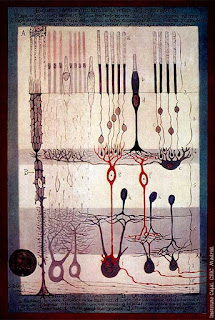Week 9: Space + Art
At last, space. Perhaps the topic that sums up the past nine weeks of lessons. Space is vast and vague. Our solar system is "space", our entire observable universe is "space", all dimensions of space and time is also "space". Unlike previously discussed topics, there are areas of space that our physics of earth cannot apply. Although humans have limitations in the exploration and understanding of space, we have never stopped from imagining.
This week I watched the latest work from Scott Ridley, Alien Covenant. A prequel to a science fiction film series that neglects Darwin's Evolution Theory. In short, the humans have already advanced to a level past Type I civilization of the Kardashev Scale, about a hundred years ahead of our technology. Shown in the previous film Prometheus, the humans believe they were created by a more advanced species. The film has a complex plot and storyline, where one film answers some mysteries of the previous film, but also raises new questions. Film is a form of art. Although sci-fi movies can sometimes be non-sense, some works such as Interstellar and the Alien series reflect human's imagination and interpretation of the universe beyond our knowledge.
This week I watched the latest work from Scott Ridley, Alien Covenant. A prequel to a science fiction film series that neglects Darwin's Evolution Theory. In short, the humans have already advanced to a level past Type I civilization of the Kardashev Scale, about a hundred years ahead of our technology. Shown in the previous film Prometheus, the humans believe they were created by a more advanced species. The film has a complex plot and storyline, where one film answers some mysteries of the previous film, but also raises new questions. Film is a form of art. Although sci-fi movies can sometimes be non-sense, some works such as Interstellar and the Alien series reflect human's imagination and interpretation of the universe beyond our knowledge.
One of the many future space missions, the SpaceX Mars 2020 and future manned missions in 2022 interests me the most. This may be humanity's first step into space colonization. “We will stay on Earth forever, and eventually there will be an extinction event…and the alternative is to become a spacefaring and multiplanetary species—That’s what we want.” -Elon Musk.
If the Evolution Theory is accurate, all species are adapting and evolving for the better. However planets age and die, the only way for humanity to survive and perhaps advance into Civilization Type I and beyond we have to develop in interstellar travel and colonization.
For this week's event, I visited the Natural History Museum. This trip helped me to gain a better insight into the evolution of animals. With the information and fossils of existing and extinct species, I was able to see criteria of natural selection. It also opened up new ideas and questions. We are definitely not alone in this vast universe or multiverse. I began to wonder the evolution of extraterrestrial species. Since the planet's environment and habitat is a major factor in evolution, the evolution process may be totally different from ours. It is possible that our physics and breeding structures do not even apply to their world.
Works Cited:
"Elon Musk Has a New Timeline for Humans Living on Mars." Futurism. February 20, 2017. Accessed June 04, 2017. https://futurism.com/elon-musk-has-a-new-timeline-for-humans-living-on-mars/.
"Mars 2020." NASA. Accessed June 05, 2017. https://www.jpl.nasa.gov/missions/mars-2020/.
Spacexchannel. "Making Humans a Multiplanetary Species." YouTube. September 27, 2016. Accessed June 05, 2017. https://www.youtube.com/watch?time_continue=1&v=H7Uyfqi_TE8.
Uconlineprogram. "Space pt4." YouTube. May 30, 2012. Accessed June 03, 2017. https://www.youtube.com/watch?v=J5ClKO6AJPo.
Images:
From "Elon Musk Has a New Timeline for Humans Living on Mars." Futurism. February 20, 2017. Accessed June 04, 2017. https://futurism.com/elon-musk-has-a-new-timeline-for-humans-living-on-mars/.
https://cdn.vox-cdn.com/uploads/chorus_asset/file/7181949/Screen_Shot_2016-09-28_at_11.36.44_AM.0.png
http://198.74.50.173/wp-content/uploads/2017/02/spacex_mars_rocket_comparison1-1.jpg
Poster: Alien Covenant
http://www.alien-covenant.com/app/xalien-covenant-fill.jpg.pagespeed.ic.rPyCbS72Kx.jpg






Comments
Post a Comment